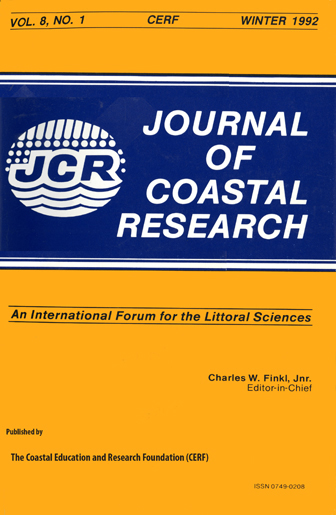Sea-Level Rise on the South Carolina Coast: Two Case Studies for 2100
Keywords:
Climate change, local vertical movement, sea-level rise, storm surge, tropical cyclones, wave predictionAbstract
Over the next century a "greenhouse"-induced sea-level rise (SLR) of 0.25 m to 2.00 m may occur. This SLR, when combined with local vertical movements along coasts, has the potential to cause significant changes In the South Carolina coastline. These changes may occur through the inundation of low-lying coastal areas, Increases in 10 erosion rates from increased wave heights and possible increases in tropical cyclone intensities and frequencies. To explore the potential effects of climate change on the South Carolina coast, four SLR scenarios were applied to two USGS 7.5' quadrangles (Wampee and Hilton Head, South Carolina). The impacts of SLR were measured in terms of the amount of land that would be lost to the sea permanently (from SLR and local vertical movement) and episodically (from tropical cyclone-induced storm surges) if the current coastline was abandoned and the retreat option taken. Based on results from the case studies, the following conclusions were drawn: (1) studies on the regional effects of SLR must consider local vertical movement in order to be valid, (2) as sea level rises the relief of coastal areas will decrease, increasing the percentage of land above mean sea level subject to episodic inundatlon, and (3) as local sea surface temperatures rise, the maximum tropical cyclone-induced surge obtainable along the South Carolina coast will increase, and the probability of a storm occurring may also increase.


